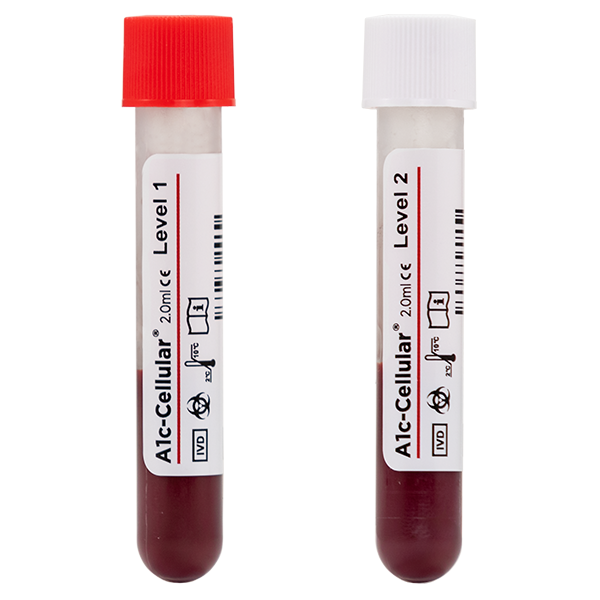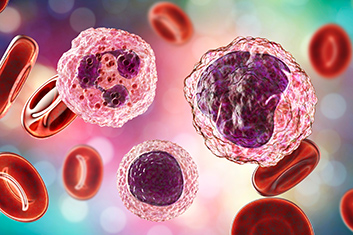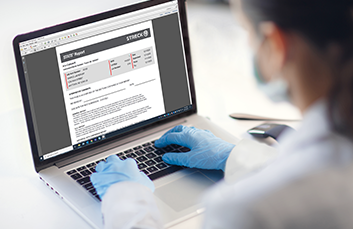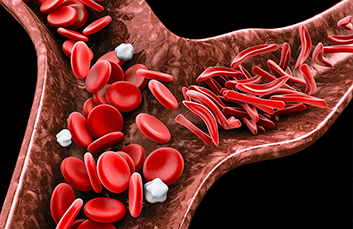Lysing is a critical step in A1c testing
Topics Featured
Diabetes is the seventh leading cause of death in the United States. In the last 20 years, the number of adults diagnosed with diabetes has more than doubled – today, more than 34 million U.S. adults have diabetes. The Centers for Disease Control and Prevention estimates 1.5 million new cases of diabetes are diagnosed each year.
Diabetes is a disease in which the body does not produce or properly use insulin, a hormone that converts sugar, starches and other food into energy needed for daily life. An insulin deficiency can result in hyperglycemia, or high blood glucose. Undetected or poorly managed diabetes leads to chronically elevated blood glucose, which can cause serious health complications including heart disease, stroke, kidney failure, blindness, amputation of toes, feet or legs, and premature death.
Type 1 Diabetes
Type 1 diabetes is thought to be caused by an autoimmune reaction that stops your body from making insulin. Approximately 5% to 10% of the people who have diabetes have type 1. Symptoms often develop quickly, and it’s usually diagnosed in children, teens and young adults. People with type 1 diabetes need to take insulin every day to survive. Currently, no one knows how to prevent type 1 diabetes.
Type 2 Diabetes
With type 2 diabetes, your body doesn’t use insulin well and can’t keep blood sugar at normal levels. About 90% to 95% of people with diabetes have type 2. It develops over many years and is usually diagnosed in adults. Type 2 diabetes can be prevented or delayed with healthy lifestyle changes, such as losing weight, eating healthy food and being active. You may not notice any symptoms, so it’s important to get your blood sugar tested if you’re at risk.
Hemoglobin A1c (HbA1c) testing ̶ A1c, for short ̶ is a simple blood test with powerhouse results. The test results give a picture of your average blood sugar level over the past two to three months. The higher the levels, the greater risk of developing diabetes complications.
The A1c test results are reported as a percentage. The goal for most adults with diabetes is an A1c that is less than 7%. The higher the percentage, the higher your blood sugar levels over the past three months. The A1c test can also be used for diagnosis, based on the following guidelines:
- A1c levels between 5.7% and less than 6.5% are in the prediabetes range.
- A1c levels of 6.5% or higher are in the diabetes range.
HbA1c testing measures the average blood glucose concentration over the preceding three months, which is the average lifespan of a red blood cell. In contrast, a blood glucose test only measures glucose levels from the previous three to four hours. While daily glucose testing is important to monitor the immediate effect of activities like food intake or exercise, HbA1c testing gives a better indication of long-term glycemic control and plays a critical role in the diagnosis, assessment and monitoring of diabetes.
Doctors use HbA1c results to monitor the ongoing health of a diabetic patient and a false result could lead to ineffective treatment. In a chronically diabetic patient, that could lead to critical complications, including heart disease, stroke, neuropathy and kidney disease. Accurate diagnosis and monitoring are critical to successful management of this potentially deadly disease.
An HbA1c control is a critical component of the HbA1c testing process. Using a full process HbA1c control provides confidence that the entire HbA1c testing procedure, from sample preparation to instrument results, is functioning properly and producing accurate results.

Some laboratories fail to monitor the critical step of lysing the RBCs when controlling HbA1c testing with frozen or lyophilized controls that contain free hemoglobin. If RBCs are not lysed properly, hemoglobin cannot be released from the cell and measured accurately. Controls with a compromised lysing procedure can cause two primary issues: Excessive “clogging” of the analyzer column component that leads to inaccurate results or inability to provide results, and potential misclassification of patients (normal, prediabetic, diabetic).
Streck’s A1c-Cellular® is unique because the lysing of the RBCs is also confirmed. A1c-Cellular is the only control on the market that contains intact red blood cells and monitors the entire HbA1c testing process, including the lysing of the red blood cells. This important step ensures the entire system, instrument and reagents, is working properly and providing accurate patient results.


ILQC: How to earn the trust of your clients and their patients

